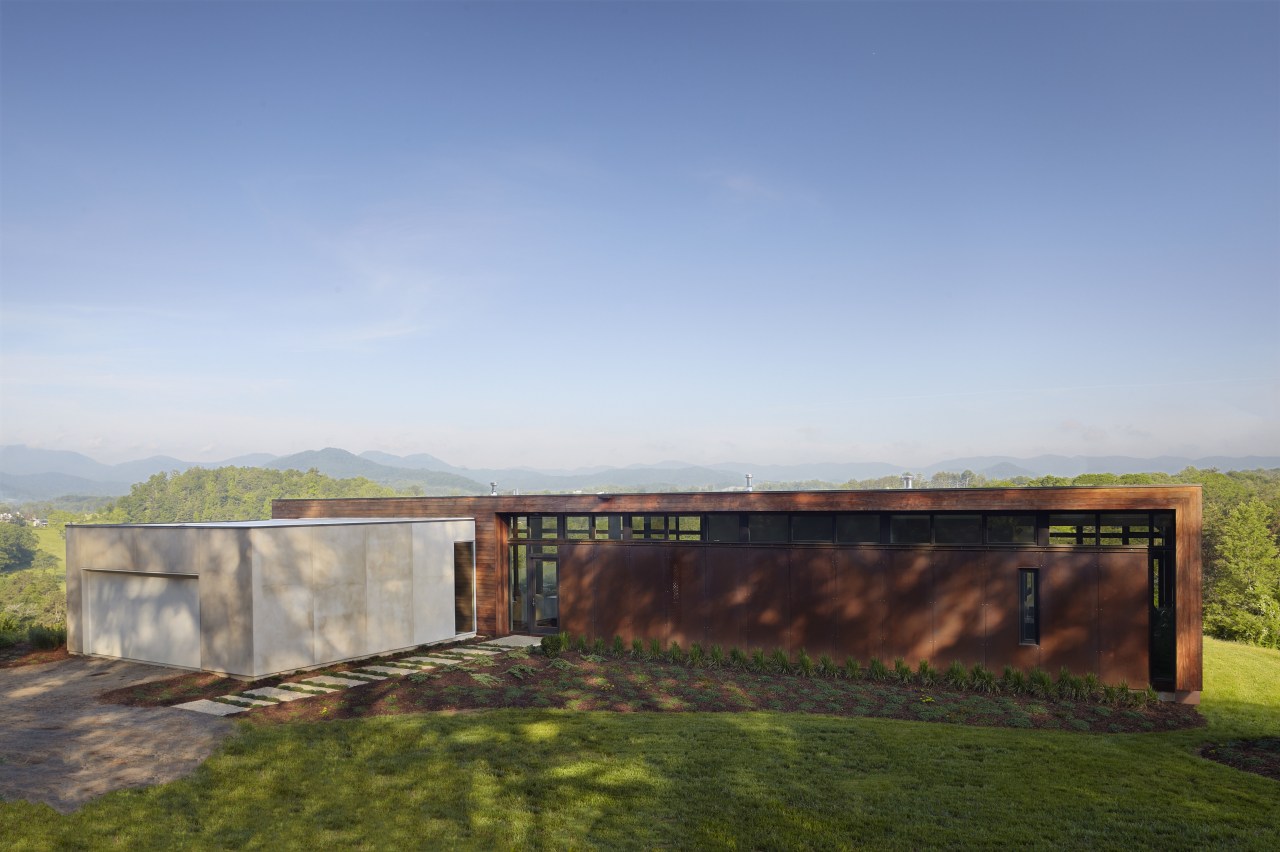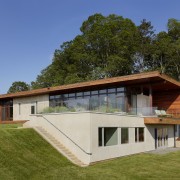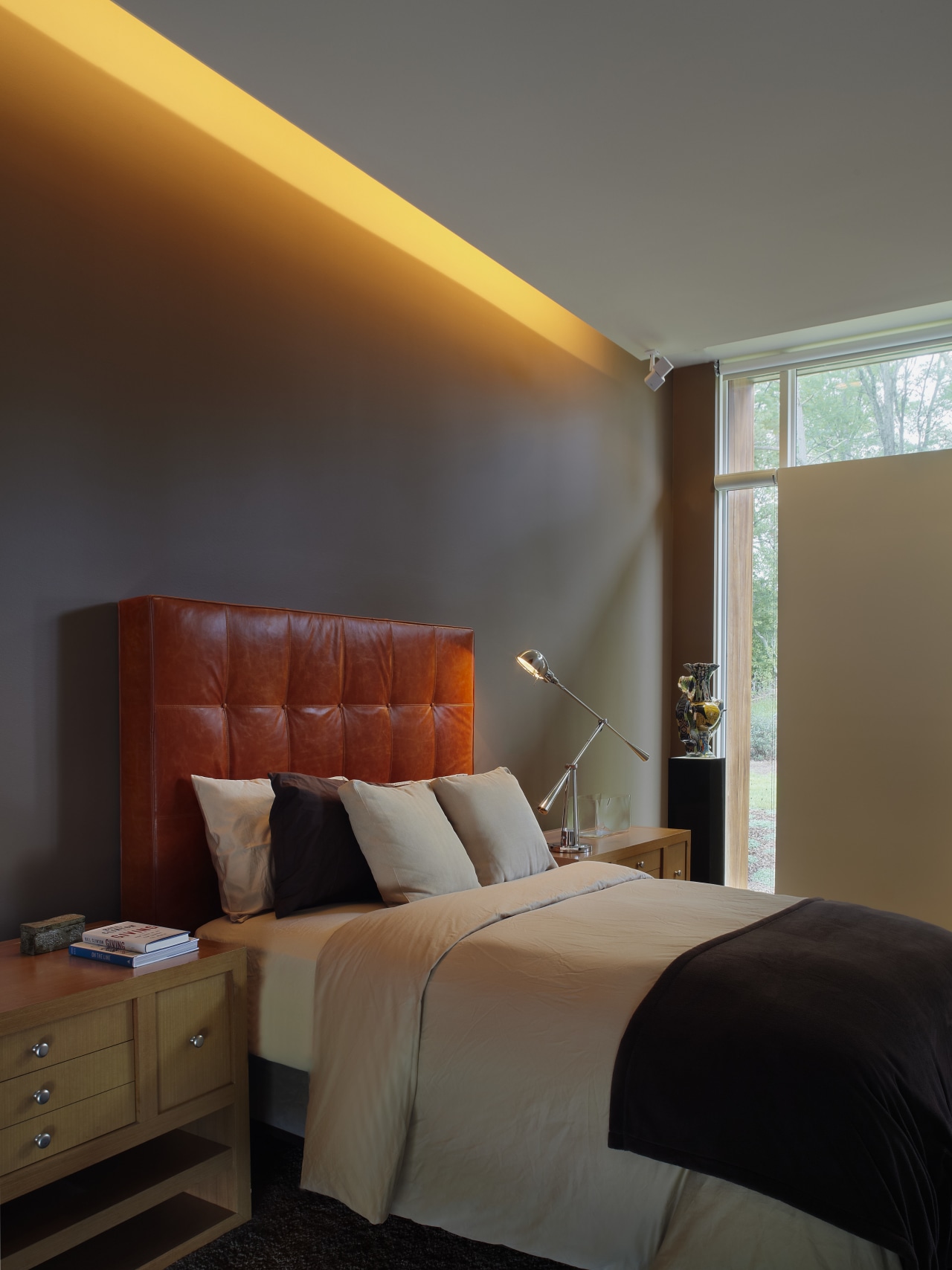Embracing design modernist house by Eric A Gartner
Modernist house with rusted corten steel and hardwood

For centuries, pastoral landscapes have dictated an archetypal country-cottage design response, but there are benefits in doing exactly the opposite taking a much more modernist approach.
This house, which is used by the owners during summer and fall, sits on a picturesque, 23-acre block of land in the foothills of the Blue Ridge Mountains.
Eric Gartner of SPG Architects says the owners, who were family friends, were familiar with his firm's work, and open to the suggestion of a modernist form.
"The owners agreed that they wanted a very discreet structure to orientate the arrival point," the architect says. "The house is reached by a long winding driveway through a glade in the woods, which ends in the sheltered forecourt. It is a very intimate, welcoming area the L shape of the house and the corresponding L shape of the wooded area enclose the yard. We also ensured the views are not visible from this point you only catch a glimpse of what lies beyond when you move up to the glass front door."
The dramatic, modernist form of the house owes as much to its siding as it does to its simple, rectangular volumes. Walls facing the front courtyard are clad in rusted corten steel panels. The rest of the main volume is wrapped by cumaru hardwood in similar color tones.
"The rusty red color of the steel and wood is the same shade as the red earth in this part of the Blue Ridge Mountains," says Gartner. "People often think steel is not compatible with a natural landscape it's not a familiar architectural vocabulary in a country setting. I felt it was important to make this house seem grounded into the landscape. So the house is very much the color of the deep red clay. These materials also define this volume as the main living space the garage, media room and guest suite below are in off-white stucco."
Just as hardwood wraps the exterior, providing shelter and shade, so the interior appears embraced by the C-shaped form of the architecture, which in turn allows the interior to embrace the framed views of the woodlands and hills.
Exposed columns and beams on the interior continue the modernist theme of the architecture.
"Pulling the steel columns slightly back from the windows allows the wall of glazing to read as a single entity, and to be opened in its entirety," says Gartner. "The exposed structural elements are integral to both the aesthetic and the way the building was conceived."
Energy efficiency was another driver for the design Gartner says the house features a number of intensive insulation strategies. And although the long wall of windows faces west, large overhangs and automated shades help to minimize solar gain in summer. Building materials and systems were chosen for their ongoing energy efficiency.
In keeping with modern lifestyles, the living area is one large open-plan space. A recessed ceiling above the living room helps to define the seating area and breaks up the large ceiling plane.
"Even though this is a single space, I still like to articulate the functions of the different areas, but in a subtle way," says the architect. "This is achieved by variations in the lighting, as well as the recessed ceiling elements."
Designed for easy entertaining, the kitchen features birch veneer cabinets with a light gray wash. The long island is in quartersawn oak veneer with a dark teak stain.
"With its deep wood countertop, the island has a furniture look that is similar to the dining and coffee tables," says Gartner. "The wood legs don't go right down to the floor, so the island appears to float within the space, much as the other tables appear to float there is a visual continuity between these pieces."
Other natural materials include cumaru tongue-and-groove flooring in the main living pavilion.
Outside, a rooftop garden planted in meadow flowers and grasses screens the basement level of the house from view. Clear glass safety railings around the edge of the garden ensures the views remain uninterrupted.
Story by: Trendsideas
Home kitchen bathroom commercial design
Connected to the ocean
Simplified seclusion
At one with the Amazon
US Home & Architectural Trends Vol. 28/7
Home & Architectural Trends highlights great residential architecture. This book provides prospective home builders ...
Read More














